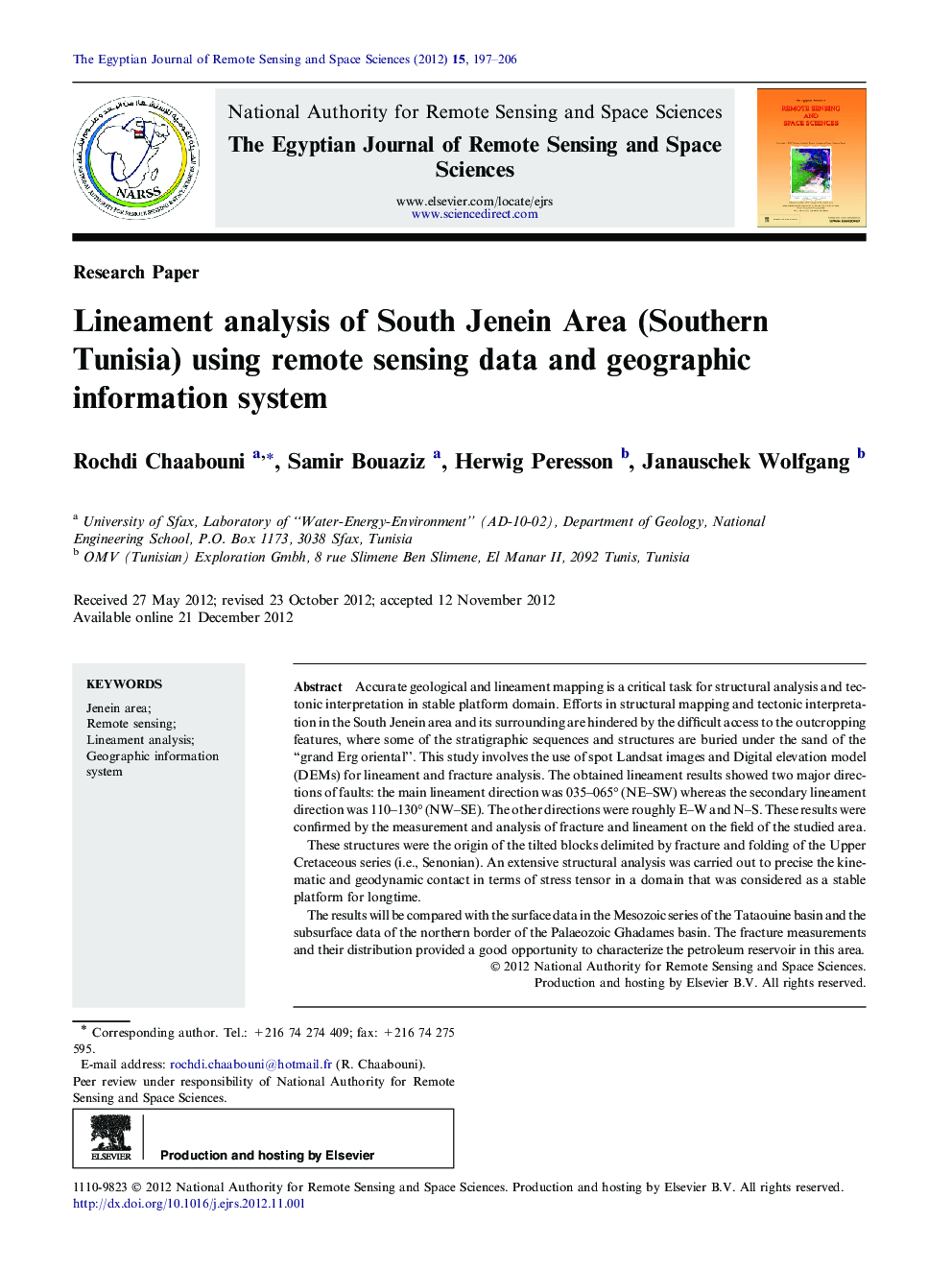| Article ID | Journal | Published Year | Pages | File Type |
|---|---|---|---|---|
| 4681395 | The Egyptian Journal of Remote Sensing and Space Science | 2012 | 10 Pages |
Accurate geological and lineament mapping is a critical task for structural analysis and tectonic interpretation in stable platform domain. Efforts in structural mapping and tectonic interpretation in the South Jenein area and its surrounding are hindered by the difficult access to the outcropping features, where some of the stratigraphic sequences and structures are buried under the sand of the “grand Erg oriental”. This study involves the use of spot Landsat images and Digital elevation model (DEMs) for lineament and fracture analysis. The obtained lineament results showed two major directions of faults: the main lineament direction was 035–065° (NE–SW) whereas the secondary lineament direction was 110–130° (NW–SE). The other directions were roughly E–W and N–S. These results were confirmed by the measurement and analysis of fracture and lineament on the field of the studied area.These structures were the origin of the tilted blocks delimited by fracture and folding of the Upper Cretaceous series (i.e., Senonian). An extensive structural analysis was carried out to precise the kinematic and geodynamic contact in terms of stress tensor in a domain that was considered as a stable platform for longtime.The results will be compared with the surface data in the Mesozoic series of the Tataouine basin and the subsurface data of the northern border of the Palaeozoic Ghadames basin. The fracture measurements and their distribution provided a good opportunity to characterize the petroleum reservoir in this area.
